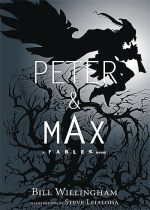Book Review: 2666
 2666
2666
8.9 of 10
Writer: Roberto Bolano
Buy book (hardcover) from Amazon
Buy book (paperback) from Amazon
After three weeks of reading in spurts, I've finally managed to finish 2666. Normally, I don't read this type of novel (the kind with a lot of realism). My fiction reading lists are usually limited to two genres: Science fiction and trashy fantasy. But 2666, when it reached North America, made a lot of fuss that was hard for me to ignore. Especially when every literary nut and critic were giving it high soaring scores. At first, I was skeptical about the ratings that they gave. But after reading the book myself, I couldn't agree with them more.
The book is divided into 5 different parts, each of which can stand alone as short novels because they have their own individual plot -sorry, I won't go into detail because it's long. In fact, each parts have little association with one another. They, the parts, are only bound by a central theme of violence and death, a recurring nightmare, which are the unsolved rape and murder cases of about 300 women in Santa Teresa, a city in North Mexico, and are linked together by a cast of characters that crosses over in different parts of the book.
Published a year after its author's death -the first draft was rescued from Bolano's desk, 2666 is actually an unfinished book. Nonetheless, even unfinished and without a logical ending, this book is a masterful work of literature and never felt incomplete. Because, instead of a proper closure to the story, an openness is left, an abyss where readers are cast to ponder and fill the blank spaces in the story with their imagination, and a message: that violence and death is endless and that some things will continue to remain as mysteries, unsolved.
The book was also written by Bolano during his illness and, since the book was only in its first draft, was published in its partially unedited state. But Bolano's illness didn't diminish the solidity of his writing. But, my guess, his disease even fueled him, encapsulating his suffering and celebrating his life through this book. Its unedited state also made it real and sincere. Sometimes, I feel that Bolano himself is talking to me, about literature or the history of snuff films. Although, I do admit, that in some parts, in its unedited state, the book is convoluted by nonsensical and feverish ramblings.
I was definitely left at awe, drained but at awe, after I finished this book. Now, I understood why the critics gave it a high score. The book is a masterpiece, epic in its openness, imperfection and sincerity. I've never read an open ended book such as 2666. Though, sometimes, it's quite maddening to think of a fitting end to the story, or how Bolano would end it. Sometimes, I also wish that it was edited, and that the convoluted parts were ironed out for smooth reading. But, I guess, if my wishes were granted, the book won't be as great as it is now. As for Roberto Bolano, I've never read any of his works before. But, now, I'm sold and all his books are on my reading lists.
Similar Posts:
Q1 Book List
Last Year's Leftovers
Top 8 Books of 2008
Book Review: Liberation
Book Review: The Graveyard Book











2 comments:
Alrighty, thanks for the blogroll :) and thanks for the comments, you made akismet think you're spamming..lol
after weeks of looking for The Graveyard Book, I finally found a copy of one earlier...
funny dun pa siya sa bookstore sa malapit sa village namin. hay.
Post a Comment